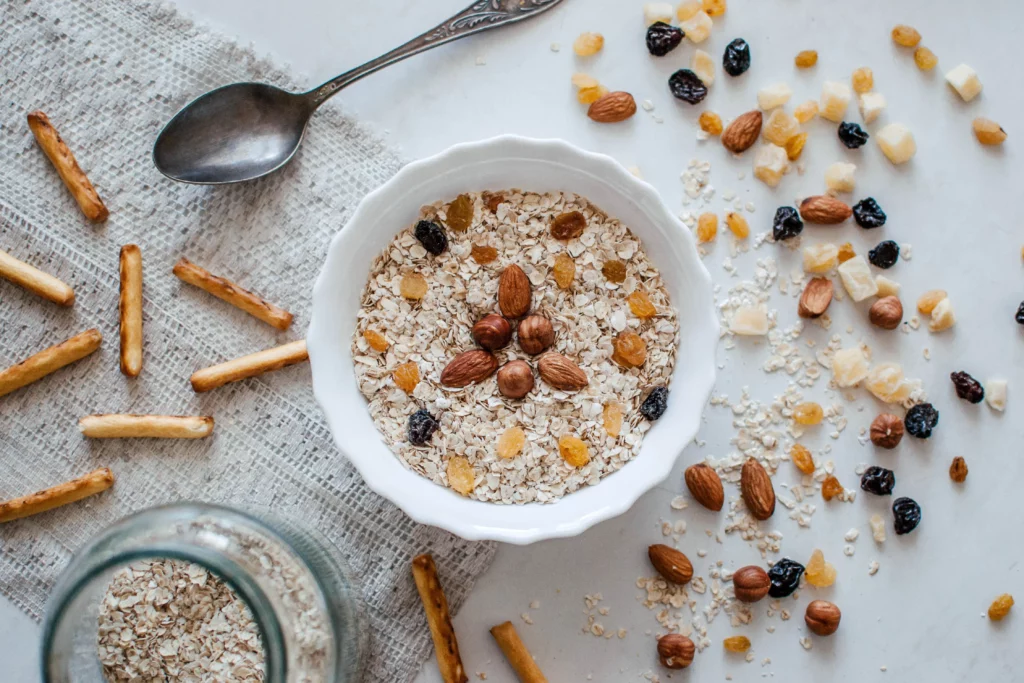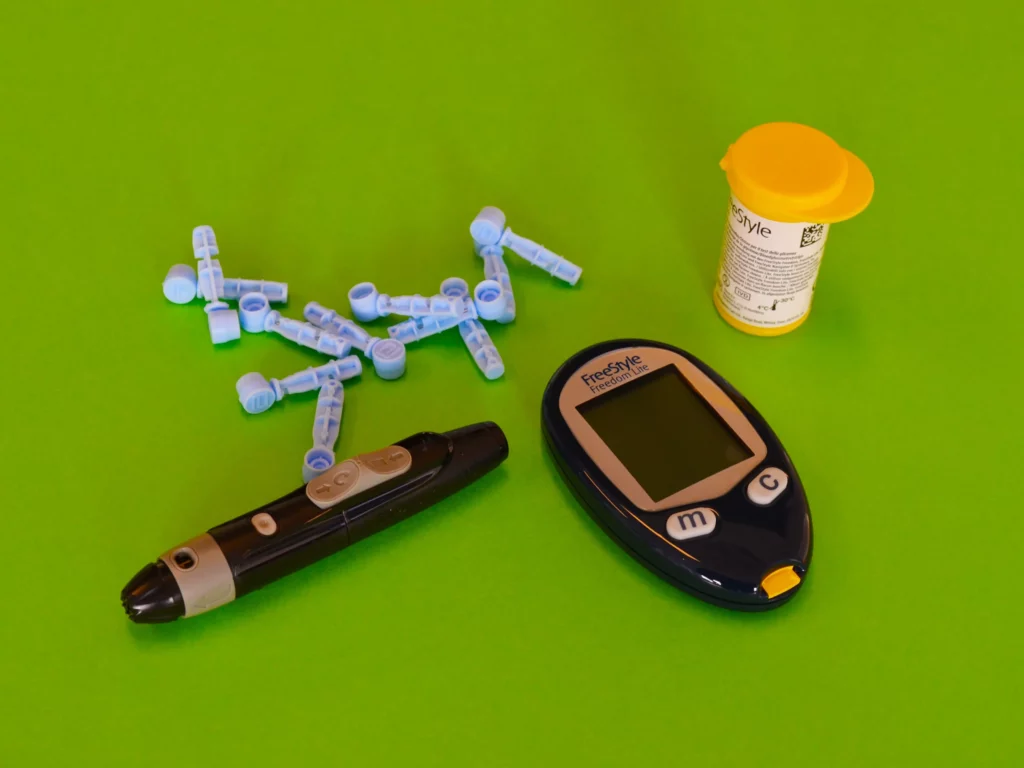When we talk about diabetes and blood sugar management, the narrative has long been dominated by the mantra “less is more,” especially regarding carbohydrate intake. The standard advice has been clear and unequivocal: cut back on carbs to control blood sugar. But what if the conventional wisdom is not the only path? What if we’ve been missing a piece of the puzzle that could revolutionize the way diabetics relate to food, especially carbohydrates?
In this blog post, we’ll delve into the idea that not all carbs are created equal, and that for some people with diabetes, eating more carbohydrates — the right kind of carbohydrates — can actually lead to better blood sugar control. So, let’s explore this nuanced approach to diabetes management, break down the science behind it, and make sense of the carb conundrum.

Chapter 1: The Carbohydrate Conundrum
For decades, carbohydrates have been cast as the main dietary villains in diabetes. It’s a straightforward equation: carbs raise blood sugar, and high blood sugar is what diabetics must avoid. But this simplified view overlooks the complex nature of carbohydrates and their diverse effects on the body.
The Glycemic Index: Not All Carbs Are Equal
The glycemic index (GI) is a system that ranks food on a scale from 0 to 100 based on their effect on blood sugar levels. Foods with a high GI are absorbed quickly, causing a rapid rise in blood sugar, while low-GI foods are metabolized more slowly, leading to a gradual rise in blood sugar.
The Fiber Factor
Fiber is a type of carbohydrate that the body can’t digest. It passes through the body undigested, helping to regulate the body’s use of sugars and keeping hunger and blood sugar in check. Foods high in fiber have a lower GI and can prevent the blood sugar spikes that can be so detrimental.
Whole Foods vs. Processed Foods
Processed foods often have added sugars and reduced fiber content, which can wreak havoc on blood sugar levels. In contrast, whole foods contain natural fiber and have a lower GI, which can help maintain stable blood sugar.
Chapter 2: Carbohydrates and Diabetes Control
Understanding the interplay between different types of carbohydrates and blood sugar levels is key to mastering diabetes management.
Low-GI Foods: A Diabetic’s Best Friend
Integrating low-GI foods into the diet can help diabetics control their blood sugar levels more effectively. These foods include non-starchy vegetables, some fruits, whole grains, and legumes.
The Balancing Act: Meal Composition
A meal that balances low-GI carbohydrates with healthy fats and proteins can lead to an even slower release of glucose into the bloodstream, which helps in managing blood sugar levels over time.
Portion Control and Meal Frequency
Eating smaller, more frequent meals can help control blood sugar. By spreading carbohydrate intake throughout the day, the body can manage glucose levels more efficiently.

Chapter 3: The Personalization of Diabetes Management
Diabetes is not a one-size-fits-all condition, and managing it requires a personalized approach.
Carbohydrate Counting and Blood Sugar Monitoring
Many diabetics have found success by counting carbs and monitoring their blood sugar to understand how different foods affect them personally.
The Role of Insulin Sensitivity
Factors such as weight, activity level, and even genetics play a role in how the body processes carbohydrates. Understanding one’s own insulin sensitivity is crucial for managing diabetes effectively.
The Quality of Carbohydrates
Focusing on the quality of carbohydrates is essential. Nutrient-dense, high-fiber carbs have a different effect on the body than refined carbs, despite their similar macronutrient profiles.
Chapter 4: Debunking Myths and Embracing Complexity
It’s time to challenge the myths surrounding carbohydrates and diabetes and embrace the complexity of this relationship.
Myth 1: All Carbs Are Bad for Diabetics
Not all carbs are bad. In fact, some can be quite beneficial. It’s the type, quality, and quantity that matter.
Myth 2: Diabetics Should Avoid Fruit
While fruit does contain sugar, it also provides essential nutrients and fiber, which can make it a healthy part of a diabetic diet in moderation.
Myth 3: A Low-Carb Diet Is the Only Way to Control Diabetes
While low-carb diets can be effective for some, they are not the only approach, and for some diabetics, more moderate-carb diets that focus on the quality and type of carbohydrates can also be very effective.

Chapter 5: Implementing a High-Quality Carb Diet in Diabetes Management
The journey to incorporating more high-quality carbohydrates into a diabetic’s diet must be taken with care. Here are the steps to follow:
Start with Education: Understanding the difference between high-GI and low-GI foods, recognizing the role of fiber, and knowing how to read food labels are critical first steps.
Keep a Food Diary: Documenting what you eat and how it affects your blood sugar can provide valuable insights and help tailor your diet to your personal needs.
Consult with a Dietitian: A registered dietitian specialized in diabetes management can help you design a meal plan that includes the right balance of carbohydrates.
Experiment with Moderation: Start slowly by introducing more complex carbs and monitoring how your blood sugar responds.
Chapter 6: Case Studies and Success Stories
There are numerous anecdotal and research-backed success stories of diabetics who have managed their blood sugar levels successfully with a diet rich in high-quality carbs.
The Legume Lover: One individual might find that including legumes in their diet helps to control their blood sugar due to the high fiber and protein content, despite legumes being a source of carbs.
The Fruit Fanatic: Another person might discover that eating whole fruits in moderation doesn’t spike their blood sugar and also reduces their cravings for processed sweets.
The Whole Grains Advocate: Someone else might see improved glycemic control by swapping out white bread for whole-grain alternatives, thanks to the lower GI and higher fiber content.
Each of these case studies underscores the importance of personalization in diabetes management.
Chapter 7: Potential Risks and How to Mitigate Them
As with any dietary changes, there are risks to consider, especially for diabetics:
Hypoglycemia: If you are on medications that increase insulin levels, adding more carbs without adjusting medication can lead to low blood sugar.
Weight Gain: More carbohydrates can potentially lead to weight gain if not balanced with the overall caloric intake and physical activity.
Overcompensation: There’s a risk of overeating high-GI foods by mistaking all carbs as equal in their effects.
To mitigate these risks, it’s crucial to work closely with healthcare providers, make changes gradually, and monitor blood sugar levels frequently.

Chapter 8: The Future of Diabetes Management
As research continues to unfold, the future of diabetes management looks promising, with a move towards more personalized nutrition plans.
Emerging Research: New studies on the microbiome, individual metabolism, and genetic predispositions are shedding light on how different people respond to carbohydrates.
Technological Advances: Continuous glucose monitors (CGMs) and insulin pumps are making it easier for diabetics to monitor and manage their blood sugar levels in real-time.
Personalized Nutrition: The concept of personalized nutrition takes into account individual differences in metabolism, lifestyle, and preferences to create a tailored approach to diet and diabetes management.
Carbohydrates are not the enemy; it’s about the quality, quantity, and individual response to them. By focusing on low-GI, high-fiber carbohydrates, those living with diabetes can enjoy a diverse diet while managing their blood sugar levels effectively. It’s a journey of discovery, one that involves monitoring, adjusting, and finding the right balance that works for your body.
Remember, the goal is not just to control blood sugar but to enjoy a rich, satisfying diet that supports overall health and well-being. As you navigate your own path, keep an open mind, stay informed, and embrace the joy of eating in a way that feels good for your body and your life.
Practical Guide: Implementing High-Quality Carbohydrates into a Diabetic Diet
Chapter 9: Meal Planning and Preparation
Meal planning is a cornerstone of effective diabetes management. Here’s how you can plan meals with high-quality carbs:
Start with Vegetables: Fill half of your plate with non-starchy vegetables. These are low in carbs and high in nutrients and fiber.
Add Lean Protein: Include a quarter of your plate as lean protein. This can be plant-based or animal-based, helping to slow carbohydrate absorption and increase satiety.
Choose Your Carbs Wisely: The remaining quarter of your plate should be reserved for high-quality carbs. Think whole grains like quinoa, brown rice, or whole grain bread, and starchy vegetables in moderation.
Healthy Fats Are Your Friends: Incorporate a small amount of healthy fats like olive oil, nuts, or avocados. These can add flavor and also contribute to satiety and a more stable blood glucose level.
Cook in Batches: Prepare larger quantities of low-GI grains and legumes, so you always have a healthy carb option ready to go.

Chapter 10: Snacking Smart
Smart snacking can help maintain stable blood glucose levels throughout the day. Here are some ideas:
Fiber-Rich Fruits: Berries, apples, and pears with the skin on are great choices.
Nuts and Seeds: A handful of nuts can provide a good mix of protein, fat, and some fiber without a significant carb load.
Cheese and Whole Grain Crackers: Pairing a small amount of cheese with whole grain crackers offers a balanced snack with carbs, protein, and fat.
Vegetables and Hummus: Carrot sticks, bell pepper slices, and other crunchy veggies dipped in hummus make for a satisfying low-carb snack.
Chapter 11: The Art of Substitution
Making substitutions can make a big difference. Here are some swaps:
Swap White for Whole: Choose whole grain versions of bread, pasta, and rice instead of white.
Sweeten with Fruit: Use mashed bananas or pureed dates to sweeten recipes instead of sugar.
Get Creative with Veggies: Use zucchini noodles or cauliflower rice to replace higher carb options.
Reinvent Your Recipes: Modify your favorite dishes to include more vegetables and whole grains, and less sugar and refined grains.
Chapter 12: Eating Out and Social Events
Navigating restaurants and social gatherings can be a challenge. Keep these tips in mind:
Do Your Research: Look up the menu ahead of time and plan which dishes are best for you.
Ask for Modifications: Don’t be afraid to ask for a dish to be modified to meet your dietary needs.
Watch Your Portions: If the portions are large, consider sharing a meal or taking half home for later.
Focus on the Company: Remember, social events are about the people, not just the food. Enjoy the company you’re with, which can take your mind off the urge to overindulge.

Chapter 13: Overcoming Obstacles
You will face challenges as you make these dietary changes. Here’s how to overcome them:
Be Prepared: Carry healthy snacks with you so you’re not tempted by high-carb options.
Educate Your Loved Ones: Teach friends and family about your dietary needs to make gatherings easier.
Forgive Yourself: If you slip up, don’t be too hard on yourself. Assess what went wrong and how you can avoid it in the future.
Stay Motivated: Keep your goals in mind and remind yourself why you’re making these changes.
Chapter 14: Monitoring and Adapting
Continuous monitoring is key to understanding how your body responds to different types of carbohydrates.
Use a Blood Glucose Monitor: Regular monitoring can help you see the impact of different foods and meals.
Adjust as Needed: Use the data to make informed decisions about your diet and insulin needs.
Regular Check-Ins with Your Doctor: Have regular check-ins with your healthcare provider to discuss your progress and any necessary adjustments to medications.
The Science Behind Carb Quality and Diabetes Control
It’s important to understand the science that supports a nuanced approach to carbs in diabetes management. Research has shown that:
Low-GI Foods: These cause a slower, steadier rise in blood glucose levels, which can help in maintaining better overall control of blood sugar.
Dietary Fiber: High intake of dietary fiber, particularly soluble fiber, has been associated with improved insulin sensitivity and glycemic control.
Whole Food Sources: Carbs that come from whole, unprocessed foods provide more nutritional benefits and are generally better for blood sugar management.
Chapter 15: Recipe Modifications for Better Blood Sugar Management
Here are some tips for modifying recipes to improve their blood sugar impact:
Reduce Sugar: You can often reduce the sugar in a recipe by one-third to one-half without significantly affecting taste or texture.
Increase Fiber: Add lentils, beans, or chickpeas to soups, stews, and salads to boost fiber content.
Whole Grains Over Refined: Use whole grain flour instead of white flour for baking and breading.
Nut Flours and Coconut Flour: These can replace grain flours in some recipes, offering a lower carb alternative.
Fruit Purees for Fat: In some recipes, you can replace oil or butter with apple sauce or mashed bananas to add moisture without added fat.
Chapter 16: Building a Supportive Community
Managing diabetes is not just about individual choices; it’s also about the support you have around you.
Join Support Groups: Connect with others who are managing diabetes to share tips, recipes, and encouragement.
Involve Your Household: Encourage family members to adopt healthier eating habits, making it easier to manage your diet at home.
Online Forums and Apps: Use technology to stay connected with a community, track your meals, and get new low-carb recipe ideas.
Chapter 17: The Role of Exercise in Carb Management
Exercise is a crucial counterpart to diet in managing diabetes because it:
Increases Insulin Sensitivity: This means that your cells are better able to use the available insulin to absorb glucose during and after activity.
Helps Manage Weight: Maintaining a healthy weight can make it easier to manage diabetes and improve your overall health.
Regulates Blood Sugar: Regular physical activity can help regulate your blood sugar levels and reduce blood sugar spikes.
Chapter 18: Understanding the Glycemic Load
While the glycemic index is useful, the glycemic load provides a more complete picture by considering the quantity of the carbohydrates being consumed.
Portion Size Matters: A food’s GI doesn’t factor in serving size; the glycemic load does. This can help in making more informed decisions about how much of a carbohydrate-rich food to eat.
Chapter 19: Keeping Up With New Research
Stay informed about the latest research on diabetes and nutrition by:
Reading Medical Journals: Publications like the American Journal of Clinical Nutrition and Diabetes Care often discuss the latest findings.
Following Thought Leaders: Social media can be a good source for updates from diabetes educators, dietitians, and endocrinologists.
Continuing Education: Look for local seminars, webinars, or classes focused on diabetes management and nutrition.
Managing diabetes with a diet that includes carbohydrates is not about adhering to strict rules; it’s a personal journey that involves learning about how your body responds to different foods and activities. Embracing high-quality carbs may not only make your diet more enjoyable but also improve your health and quality of life.
Remember, the key to success in diabetes management is a combination of informed dietary choices, regular physical activity, ongoing education, and a supportive community. By taking a personalized and proactive approach to your diet, and by being open to new research and strategies, you can lead a healthy, vibrant life, even with diabetes.
Looking for great low-carb recipes? Click here: Our Low-Carb and Keto Recipes
Or check out Low Carbing Among Friends for great meal ideas!
